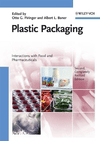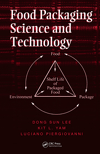Printing: Flexo Printing
Getting Lean with Flexo
Admiral Packaging just added its third flexo press, better enabling the printer/converter to increase the efficiency of its printing capacity.

For about the past decade, Providence, Rhode Island-based Admiral Packaging – a fourth-generation family-owned printer/converter – has made it a point to focus on lean manufacturing as a means of streamlining efficiency and removing waste from its operations.
“It’s not really an initiative, it’s a process – it’s a continuous process,” says Harley Frank, Admiral Packaging president. “You can have the best technology in the world, the most advanced, automated equipment, and if you’re not addressing waste in the process, then you’re throwing a lot of money away. We’ve been really focused on finding those opportunities, assisting the operator, so they can spend their time doing what they’re really good at.”
As Frank notes, being lean is two-fold. Yes, there’s the equipment side of it, but there’s also a focus that must be established within the company to eliminate waste and streamline efficiency in the ways that a machine cannot do. However, on the equipment side of things, Admiral’s new 10-color W&H MIRAFLEX II C flexographic printing press is holding up its end of the deal.
“W&H did a really good job with this generation of presses to really address some of the productivity issues that we’ve had in the past,” says Frank. “Many manufacturers, going back 8-10 years ago, were not as focused on that, they were more focused on bells and whistles.”
Among the process improvements in its latest press – one of three flexo presses in Admiral’s 250,000-square-foot facility – are higher line speeds, quicker changeovers, faster wash-ups and rack-outs, and variable drive improvements, among others.
But as Frank mentions, efficient equipment is only about half of being truly lean.
“The focus is making sure that everything you could possibly need at the press is at the press before you need it,” he says. “Anything that you can do externally from setup, you’re doing it. Having all your inks available, your plates, your cores, (so you’re) not looking for things. Those are the killers.”
To achieve this, Robert Hummell, Admiral’s plant manager, has arranged storage areas where extra supplies are located. The areas are kept neat and organized, so that press operators can quickly and easily find supplies. Hummell says that it can be challenging getting employees to buy in to some of the process improvements over the old tried and true ways of the past, but once they realize the payoff, most go all in.
“It’s like Teflon coating your drip pan,” Hummell says. “You spend hours cleaning your drip pan. Teflon coat them, you spend five minutes on the cleanup. It’s like, ‘Wow, we should have done this years ago.’”
Admiral’s Sustainability Program
Efficiency on the plant floor isn’t the only way Admiral Packaging has improved its operations. The company has instituted a sustainability program that’s helped to conserve water and greatly reduce its dependency on fossil fuels. Here are some of the highlights of Admiral’s sustainability initiatives thus far:
- It replaced more than 200 windows in its Providence facility with Low-E energy efficient ones. The company says that this has reduced its CO2 equivalent by about 100 metric tons a year.
- It added closed-looped glycol chillers, which helps conserve about 1 million gallons of well water each year.
- It replaced its steam boiler with clean-burning natural gas burners, a move that helps it reduce its CO2 equivalent by 150 metric tons a year and eliminate 1 ton of sulfur emissions annually.
- It replaced two antiquated catalytic oxidizers with one low energy-consuming regenerative thermal oxidizer. This helped it increase VOC destruction up to 99.1 percent, and it has also reduced CO2 equivalents by more than 400 metric tons a year.
Admiral Packaging
(401) 274-7000; www.admiralpkg.com
Looking for a reprint of this article?
From high-res PDFs to custom plaques, order your copy today!









